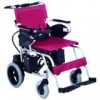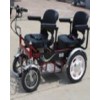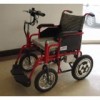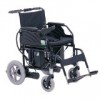如果你以为大象是一只四肢僵硬的大块头,那你可就错了。
据美国《科学》杂志在线新闻报道,当研究人员在这种厚皮动物的重要关节上贴上标记物,并用红外摄像机记录它们的运动过程时,他们发现,大象的关节实际上相当灵活;它们四肢的活动与马甚至人类并没有大的差别。这一发现扭转了科学家之前的看法,即大象树干一样的四肢是刚性且笨拙的,它同时也为研究类似的动物——例如恐龙——的运动提供了重要线索。研究人员在8月22日的《实验生物学杂志》(JEB)网络版上报告了这一研究成果。(生物谷Bioon.com)
生物谷推荐原始出处:
JEB,doi: 10.1242/jeb.018820,Lei Ren, John R. Hutchinson
The movements of limb segments and joints during locomotion in African and Asian elephants
Lei Ren1, Melanie Butler1, Charlotte Miller1, Heather Paxton1, Delf Schwerda2, Martin S. Fischer2 and John R. Hutchinson1,*
1 Structure and Motion Laboratory, Department of Veterinary Basic Sciences, The Royal Veterinary College, University of London, Hatfield, Hertfordshire AL9 7TA, UK
2 Institut fuer Spezielle Zoologie und Evolutionsbiologie, mit Phyletischem Museum, Jena 07743, Germany
As the largest extant terrestrial animals, elephants do not trot or gallop but can move smoothly to faster speeds without markedly changing their kinematics, yet with a shift from vaulting to bouncing kinetics. To understand this unusual mechanism, we quantified the forelimb and hindlimb motions of eight Asian elephants (Elephas maximus) and seven African elephants (Loxodonta africana). We used 240 Hz motion analysis (tracking 10 joint markers) to measure the flexion/extension angles and angular velocities of the limb segments and joints for 288 strides across an eightfold range of speeds (0.6–4.9 m s–1) and a sevenfold range of body mass (521–3684 kg). We show that the columnar limb orientation that elephants supposedly exemplify is an oversimplification – few segments or joints are extremely vertical during weight support (especially at faster speeds), and joint flexion during the swing phase is considerable. The `inflexible' ankle is shown to have potentially spring-like motion, unlike the highly flexible wrist, which ironically is more static during support. Elephants use approximately 31–77% of their maximal joint ranges of motion during rapid locomotion, with this fraction increasing distally in the limbs, a trend observed in some other running animals. All angular velocities decrease with increasing size, whereas smaller elephant limbs are not markedly more flexed than adults. We find no major quantitative differences between African and Asian elephant locomotion but show that elephant limb motions are more similar to those of smaller animals, including humans and horses, than commonly recognized. Such similarities have been obscured by the reliance on the term `columnar' to differentiate elephant limb posture from that of other animals. Our database will be helpful for identifying elephants with unusual limb movements, facilitating early recognition of musculoskeletal pathology.







